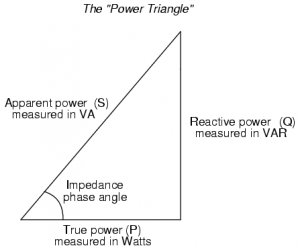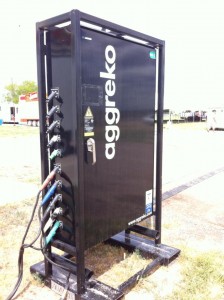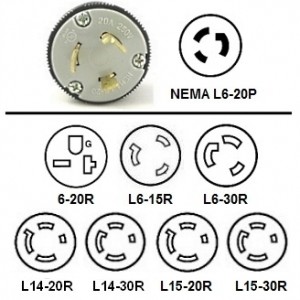Electricity Guide
This electricity guide is meant to show the various relationships between electrical terms we hear at every event, like watts, amps, and voltage. It also talks about the various cables, plugs, and extension cords we may encounter at events.
By US code, all major appliances have a ratings plate on them, usually where the wire goes into the appliance. It tells valuable information like how much amperage it takes, how many phases, what voltage etc. If you are renting equipment, you can ask their supplier for that information.
Electricity Terms:
- kW or kilowatt = 1,000 watts – a measure of true power – usually 80% of kVA. Stick with kW rating as reactive power has already been accounted for.
- kVA or 1,000 volt amps – a measure of apparent power – difference is whether the current (amps) and voltage are in phase with each other.
- Watts stay constant while amperage and voltage are inversely related – for example, 1200w = 10amp @ 120v or 5amp @ 240v
- Voltage is really 120v or 240v in the United States for single phase (not 110 / 220); 208v for 3-phase to start

Courtesy of All About Circuits
Looking for more electrical terms defined? Please visit this comprehensive glossary of electrical terms here: https://electricalschool.org/ – updated weekly.
Types of 4 Prong Plugs (see chart to the right):
- Plug Types: 4 prong plugs can be 3 phase (3 hot / 1 ground), but all 3 prong plugs are single phase
- Plug Labels: 6 (L620), 14 (Nema 14-50), or a 10 (10-30) are single phase (you will see these on RVs, Ovens, and other higher-drawing items)
- View CustomAV Rack’s website for more details on amperage, voltage, and other details of each type of plug.
Two Primary Phases Used in Events and Festivals:
- Single Phase – a method of distributing power in which all the voltages of the supply vary in unison. Single phase is best suited for powering devices needing 20A or less each and using edison outlets; most residential power distribution is run single or split-phase. Read More…
- Three Phase – a method of distributing power in which three conductors each carrying an alternating current of the same frequency and voltage amplitude to a common reference but with a phase difference of one third the period. The common reference is usually connected to the ground and often to a current-carrying conductor called the neutral. The currents in each conductor reach their peak instantaneous values sequentially.In North America, a typical three-phase system will have 208 volts between the phases and 120 volts between the phase and neutral. Most larger events and festivals will have production and site power run in three phase due to the larger power needs of audio, lighting, motors, heating / cooling, and LED panels. Read more…
3 Phase Tails – Colors (see photo below):
- Red, black, blue – hot conductors
- Green – ground
- White – neutral

A Distro Panel with 3 Phase Tails connected to a generator – most connections use camlock
Gauges needed for given amperages:
- 30A=10 gauge or higher (note: edison outlets are only rated for 20A).
- 20A=12 Gauge or higher.
- 150A = 2 gauge or higher.
- 200A = #1 or higher.
- 400A = 4/0.
What Various Amps will Provide:
- A 100A single phase service will provide 200A @ 120V or ten 20A/120V circuits while a 3 phase 100A service will provide 300A @ 120V or fifteen 20A/120V circuits.
- A 20A thermal breaker is only truly capable of about 16A of constant load – all breakers will have a safety cap of 20% – keep this in mind when finalizing your power needs.
- A good rule of thumb is to have no extension cord longer than 300′ from the power source as the power starts to diminish after that point.
